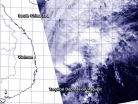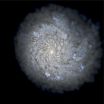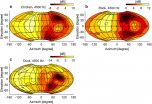Can a biomarker in the blood predict head fracture after traumatic brain injury?
2014-12-11
(Press-News.org) New Rochelle, NY, December 11, 2014--In cases of traumatic brain injury (TBI), predicting the likelihood of a cranial lesion and determining the need for head computed tomography (CT) can be aided by measuring markers of bone injury in the blood. The results of a new study comparing the usefulness of two biomarkers released into the blood following a TBI are presented in Journal of Neurotrauma, a peer-reviewed journal from Mary Ann Liebert, Inc., publishers. The article is available free on the Journal of Neurotrauma website at http://online.liebertpub.com/doi/full/10.1089/neu.2013.3245 until January 11, 2015.
The article "GFAP Out-Performs S100ß in Detecting Traumatic Intracranial Lesions on Computed Tomography in Trauma Patients with Mild Traumatic Brain Injury and Those with Extracranial Lesions," describes a study of adult trauma patients with and without mild or moderate TBI. The authors, Linda Papa and colleagues from Orlando Regional Medical Center, North Florida Veteran's Health System and University of Florida (Gainesville), University of Central Florida (Orlando), Banyan Biomarkers Inc. (Alachua, FL), Virginia Commonwealth University (Richmond, VA), and Baylor College of Medicine (Houston, TX), showed that increased blood levels of glial fibrillary acidic protein (GFAP) following TBI was a good predictor of intracranial lesions, whether or not the patient had fractures elsewhere in the body. Whereas S100ß levels in the blood of were significantly higher in trauma patients with fractures than without fractures, it was not as useful as GFAP in distinguishing between intracranial and extracranial lesions.
John T. Povlishock, PhD, Editor-in-Chief of Journal of Neurotrauma and Professor, Medical College of Virginia Campus of Virginia Commonwealth University, Richmond, notes that "This is an extremely important paper because of its relatively large sample size and its singular focus upon mild traumatic brain injury complicated by the presence of extracranial lesions. This study convincingly demonstrates the efficacy and brain specific nature of GFAP and its ability to detect traumatic intracranial lesions while also calling into question the overall utility of S100ß in the same patient population. Importantly, the superior performance of GFAP in the mild brain injured population is an important observation consistent with other reports emerging in the field. Lastly, the observation that these GFAP elevations occur relatively early in a posttraumatic course speaks to the potential utility of using these biomarkers to screen brain injured patients who then may require more extensive and/or long term imaging studies."
INFORMATION:
About the Journal
Journal of Neurotrauma is an authoritative peer-reviewed journal published 24 times per year in print and online that focuses on the latest advances in the clinical and laboratory investigation of traumatic brain and spinal cord injury. Emphasis is on the basic pathobiology of injury to the nervous system, and the papers and reviews evaluate preclinical and clinical trials targeted at improving the early management and long-term care and recovery of patients with traumatic brain injury. Journal of Neurotrauma is the official journal of the National Neurotrauma Society and the International Neurotrauma Society. Complete tables of content and a sample issue may be viewed on the Journal of Neurotrauma website at http://www.liebertpub.com/neu.
About the Publisher
Mary Ann Liebert, Inc., publishers is a privately held, fully integrated media company known for establishing authoritative peer-reviewed journals in promising areas of science and biomedical research, including Therapeutic Hypothermia and Temperature Management, Brain Connectivity, and Tissue Engineering. Its biotechnology trade magazine, Genetic Engineering & Biotechnology News (GEN), was the first in its field and is today the industry's most widely read publication worldwide. A complete list of the firm's 80 journals, books, and newsmagazines is available on the Mary Ann Liebert, Inc., publishers website at http://www.liebertpub.com.
[Attachments] See images for this press release:

ELSE PRESS RELEASES FROM THIS DATE:
2014-12-11
MAYWOOD, Il. - Riding a couple roller coasters at an amusement park appears to have triggered an unusual stroke in a 4-year-old boy, according to a report in the journal Pediatric Neurology.
The sudden acceleration, deceleration and rotational forces on the head and neck likely caused a tear in the boy's carotid artery. This tear, called a dissection, led to formation of a blood clot that triggered the stroke, Loyola University Medical Center neurologist Jose Biller, MD and colleagues report.
Strokes previously have been reported in adult roller coaster riders, but ...
2014-12-11
Worcester, Mass. - A new statistical model developed by a research team at Worcester Polytechnic Institute (WPI) may enable physicians to create personalized cancer treatments for patients based on the specific genetic mutations found in their tumors.
Just as cancer is not a single disease, but a collection of many diseases, an individual tumor is not likely to be comprised of just one type of cancer cell. In fact, the genetic mutations that lead to cancer in the first place also often result in tumors with a mix of cancer cell subtypes.
The WPI team developed a new ...
2014-12-11
The once mighty super typhoon has weakened to a depression in the South China Sea as it heads for a final landfall in southern Vietnam. NASA's Aqua satellite captured an image of the storm that showed it was weakening.
NASA's Aqua satellite passed over Hagupit on Dec. 11 at 05:20 UTC (12:20 a.m. EST) and the MODIS instrument captured a visible image of the storm. The MODIS image showed that the thunderstorms had become fragmented around the circulation center.
On Dec. 11 at 1500 UTC (10 a.m. EST) Tropical Depression Hagupit's maximum sustained winds dropped to 30 knots ...
2014-12-11
San Antonio -- December 11, 2014 -- Southwest Research Institute (SwRI) is preparing to unveil a new, miniature portable solar observatory for use onboard a commercial, manned suborbital spacecraft. The SwRI Solar Instrument Pointing Platform (SSIPP) will be on exhibit at the fall meeting of the American Geophysical Union (AGU), Dec. 16-19, at the Moscone Center in San Francisco, Calif.
Using reusable suborbital commercial spacecraft for the SSIPP development effort improves on a traditional space instrument development process that goes back to the dawn of the space ...
2014-12-11
DARIEN, IL - A new study shows that paid work time is the primary waking activity exchanged for sleep and suggests that chronic sleep loss potentially could be prevented by strategies that make work start times more flexible.
Results show that work is the dominant activity exchanged for less sleep across practically all sociodemographic categories. Compared to normal sleepers, short sleepers who reported sleeping 6 hours or less worked 1.55 more hours on weekdays and 1.86 more hours on weekends or holidays, and they started working earlier in the morning and stopped working ...
2014-12-11
December 11, 2014 - Hospitals with robotic surgical systems are more likely to perform "nephron-sparing" partial nephrectomy--a recommended alternative to removal of the entire kidney--in patients with kidney cancer, reports a study in the December issue of Medical Care. The journal is published by Lippincott Williams & Wilkins, a part of Wolters Kluwer Health.
"Hospital acquisition of the surgical robot is associated with greater proportion of partial nephrectomy, an underutilized, guideline-encouraged procedure," write Dr Ganesh Sivarajan of New York University Langone ...
2014-12-11
An interstellar mystery of why stars form has been solved thanks to the most realistic supercomputer simulations of galaxies yet made.
Theoretical astrophysicist Philip Hopkins of the California Institute of Technology (CalTech) led research that found that stellar activity -- like supernova explosions or even just starlight -- plays a big part in the formation of other stars and the growth of galaxies.
"Feedback from stars, the collective effects from supernovae, radiation, heating, pushing on gas, and stellar winds can regulate the growth of galaxies and explain why ...
2014-12-11
Unlike mammals, birds have no external ears. The outer ears of mammals play an important function in that they help the animal identify sounds coming from different elevations. But birds are also able to perceive whether the source of a sound is above them, below them, or at the same level. Now a research team from Technische Universität München (TUM) has discovered how birds are able to localize these sounds, namely by utilizing their entire head. Their findings were published recently in the PLOS ONE journal.
It is springtime, and two blackbirds are having ...
2014-12-11
NEW YORK, NY - Patients with operable kidney cancers were more likely to have a partial nephrectomy -- the recommended treatment for localized tumors -- when treated in hospitals that were early adopters of robotic surgery, according to a new study.
Researchers from NYU Langone Medical Center and elsewhere, publishing online December 11 in the journal Medical Care, report that by 2008, hospitals that had adopted robotic surgery at the start of the current century (between 2001 and 2004) performed partial nephrectomies in 38% of kidney cancer cases compared to late adopters ...
2014-12-11
Novel research reveals that the risk of acute gout attacks is more than two times higher during the night or early morning hours than it is in the daytime. The study published in Arthritis & Rheumatology, a journal of the American College of Rheumatology (ACR), confirms that nocturnal attacks persist even among those who did not consume alcohol and had a low amount of purine intake during the 24 hours prior to the gout attack.
The body produces uric acid from the process of breaking down purines--natural substances in cells in the body and in most foods--with especially ...
LAST 30 PRESS RELEASES:
[Press-News.org] Can a biomarker in the blood predict head fracture after traumatic brain injury?




